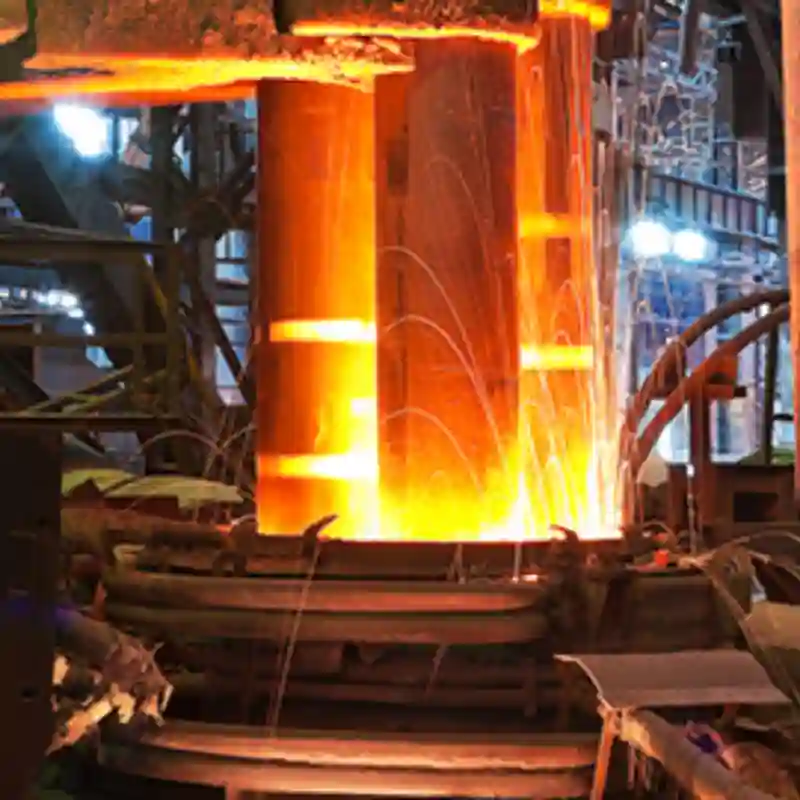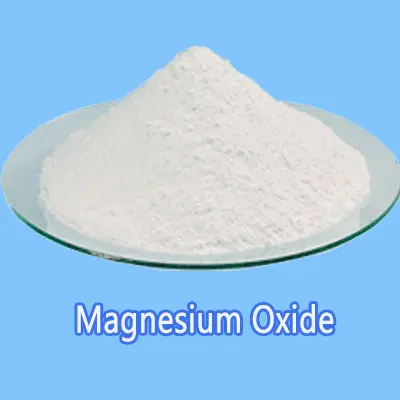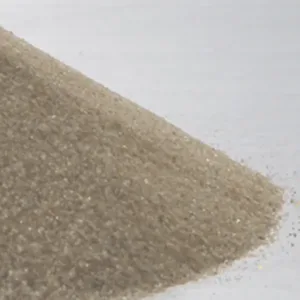Ist Magnesiumoxid (MgO) ein feuerfestes Material?
In der Feuerfestindustrie wird häufig Magnesia verwendet. Es ist chemisch als Magnesiumoxid (MgO) bekannt. Magnesiumoxid ist aufgrund seiner beeindruckend hohen Wärmeleitfähigkeit und niedrigen elektrischen Leitfähigkeit ein bevorzugtes Material, was bei Feuerfestmaterialien sehr begehrte Eigenschaften sind. Also ja, Magnesiumoxid ist tatsächlich ein Feuerfestmaterial. In diesem Beitrag besprechen wir, was Magnesiumoxid ist, welche Eigenschaften es hat und wie es als Feuerfestmaterial eingesetzt werden kann.

Feuerfeste Anwendung von Magnesiumoxid
Feuerfeste Materialien sind Materialien, die sehr hohen Temperaturen (über 1.000 °F oder 538 °C) standhalten können, was für viele Herstellungsprozesse typisch ist. Sie helfen dabei, die industriellen Prozesse, bei denen Hitze auftritt, zu konservieren. Feuerfeste Materialien sind hitzebeständiger als Metalle. Diese Materialien werden verwendet, um die heißen Oberflächen in industriellen Produktionsanlagen auszukleiden. Magnesiumoxid ist ein solches Material.
Es wird als feuerfestes Grundmaterial für Tiegel und viele industrielle Prozesse verwendet. Die oben diskutierten Eigenschaften tragen alle zur Verwendung von Magnesia (MgO) als feuerfestes Material bei. Es ist weit verbreitet und relativ erschwinglich. Dies macht Magnesiumoxid (MgO) zum feuerfesten Material der Wahl für hitzeintensive Metall-, Glas- und gebrannte Keramikanwendungen.
Magnesiumoxid wird auch als Isolator in hitzebeständigen Elektrokabeln verwendet. In der Keramik ist die Dotierung mit Magnesiumoxid wirksam, um das Kornwachstum in der Keramik zu hemmen und ihre Bruchzähigkeit zu verbessern.
Außer seiner Anwendung als feuerfestes Material wird Magnesiumoxid auch in zahlreichen anderen Bereichen eingesetzt, beispielsweise in der Landwirtschaft, im Bergbau, als Katalysator, in der Stromerzeugung, beim Bleichen von Zellstoff, in der Abwasserbehandlung usw.
Welche Anforderungen werden an feuerfeste Materialien gestellt?
Nachfolgend sind einige wesentliche Anforderungen für die Auswahl feuerfester Materialien aufgeführt:
- Es muss hohen Temperaturen standhalten.
- Es darf nicht zu viel Wärme leiten.
- Es sollte ein stabiles Volumen aufweisen, d. h. es sollte bei hohen Temperaturen keine Wärmeausdehnung erfahren. Mit anderen Worten sollte es einen niedrigen Wärmeausdehnungskoeffizienten haben.
- Muss Temperaturschwankungen standhalten können.
- Fähigkeit, der Einwirkung von Ofengasen, einschließlich CO, SO2, CO2, CH4, H2O sowie flüchtigen Oxiden und Salzen in Metallen, standzuhalten.
- Das Material sollte den Einflüssen bei der Materialverarbeitung einigermaßen standhalten.
- Muss dem Aufprall und Abrieb von mit hoher Geschwindigkeit fließenden Feststoffen, Flüssigkeiten und staubhaltigen Gasen standhalten.
Das hochreine, totgebrannte Magnesiumoxid MagChem P98 wird in feuerfesten Produkten wie feuerfesten Steinen, monolithischen Spritzmassen, Gussmassen und anderen feuerfesten Anwendungen für die Stahl- und Eisenherstellung sowie für Gießereianwendungen verwendet, bei denen eine hohe Temperaturbeständigkeit und Korrosionsbeständigkeit erforderlich sind.
Totgebranntes Magnesiumoxid (Periklas) ist in mehreren Qualitäten in Ofenchargen und sortierten Fraktionen erhältlich.
Feuerfeste Anwendung von Magnesiumoxid
Feuerfeste Materialien behalten ihre physikalische und chemische Stabilität bei hohen Temperaturen. Totgebranntes Magnesiumoxid, das in Schacht- und Drehrohröfen bei Temperaturen über 1500 °C hergestellt wird, weist eine geringere chemische Reaktivität auf und eignet sich daher für feuerfeste Anwendungen.
Magnesiumoxid (MgO) hat einen sehr hohen Schmelzpunkt von 2800 °C. Der hohe Schmelzpunkt, die Beständigkeit gegen basische Schlacken, die breite Verfügbarkeit und der moderate Preis machen Magnesiumoxid (MgO) zur ersten Wahl für hitzeintensive Anwendungen in den Bereichen Metall, Glas und gebrannte Keramik.
Der weltweit mit Abstand größte Verbraucher von Magnesiumoxid (MgO) ist die Feuerfestindustrie. Monolithische Schießmassen, Rammmassen, Gießmassen, Spinellformulierungen und feuerfeste Steine auf Magnesia-Kohlenstoff-Basis, die alle mit Magnesiumoxid (MgO) hergestellt werden, werden häufig für feuerfeste Grundauskleidungen von Stahl verwendet. Diese Produkte werden auch in Ofenanwendungen für Ferrolegierungen, Nichteisenmetalle, Glas und Keramik eingesetzt.
Magnesiumoxid-Feuerfestformmasse und Verfahren zu ihrer Herstellung
Feuerfeste Schmelzmagnesia
Die Zugabe von geschmolzenen Magnesiakörnern kann die Leistung und Haltbarkeit von feuerfesten Grundmaterialien wie Magcarbon-Steinen erheblich verbessern. Dies ist eine Folge einer höheren Schüttdichte und einer größeren Periklaskristallgröße sowie einer Neuausrichtung der Nebensilikate. Schmelzmagnesia in feuerfester Qualität hat anspruchsvolle Spezifikationen und ist normalerweise durch Folgendes gekennzeichnet:
Aufgrund der hervorragenden Korrosionsbeständigkeit wird feuerfeste Schmelzmagnesia in Bereichen der Stahlherstellung eingesetzt, die hohem Verschleiß ausgesetzt sind, z. B. in Sauerstoff- und Lichtbogenöfen, Konvertern und Pfannen.
Sorten mit ultrahoher Reinheit (> 99 Prozent MgO) werden in Hightech-Anwendungen wie optischen Geräten, Kernreaktoren und Raketendüsen eingesetzt.


